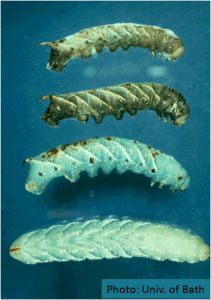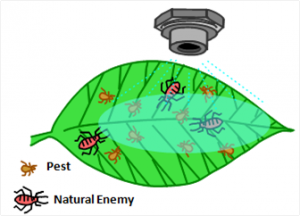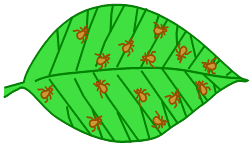
Some insects are more susceptible to insecticides during earlier life-stages. For example, hornworms are more susceptible when they are small.
Most insect control failures are not due to resistance. Before assuming insects surviving an insecticide application are resistant, eliminate other possible causes of poor control such as:
- The pest was not identified correctly and the wrong pesticide was used;
- An incorrect dosage of pesticide was used or the pesticide was applied in an improper manner;
- The pesticide was not applied at the appropriate time (i.e., pest target was not in the area at the time of treatment or was in a life stage not susceptible to the pesticide); and,
- Pests re-infested the area following the pesticide application.
Other reasons for failures include:
- Pest resurgence–If the natural enemies (i.e., predators and parasites) of the pest, as well as the pest, are eliminated by a pesticide application, the natural enemy populations can take longer to rebound than the pest population, therefore pest populations increase rapidly as the pesticide residues decrease; and
- Secondary pests–certain pests that usually do not occur at significant levels can reach damaging levels after a pesticide application because their natural enemies are eliminated by the pesticide.
 |
 |
 |
With the number of natural enemies reduced by pesticides, the pest population can rebound quickly (image source: UK Entm 530 Lecture Notes).
Once other possible causes of poor control have been eliminated, the following are common features that characterize sites where resistant insect populations occur:
- The field has a history of extensive use of a single insecticide or insecticides with the same MOA; and,
- Heavy reliance was placed on the insecticide with little use of other non-chemical control methods, such as cultural and biological control.
Various commercial test kits, based on ELISA (enzyme-linked immunosorbent assay) or PCR (polymerase chain reaction) techniques can identify and characterize the level of resistance in an insect population. In the traditional, standard method, a relative susceptibility (RS) value is determined by comparing the pesticide’s lethal effects on a perceived resistant population with a susceptible laboratory colony. Increased RS values equate to potential resistance. Test methods for various insects and modes of action are available on the Insecticide Resistance Action Committee Test Methods page.
Compiled by Wayne Buhler, PhD
